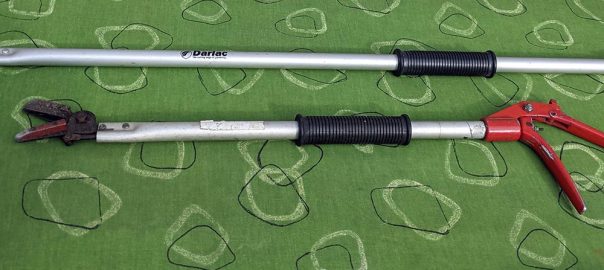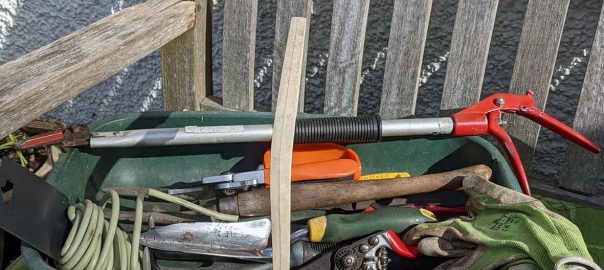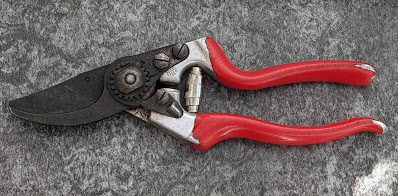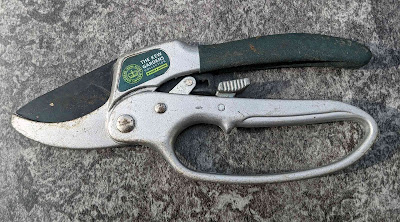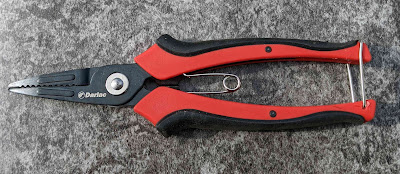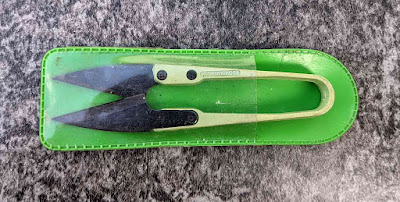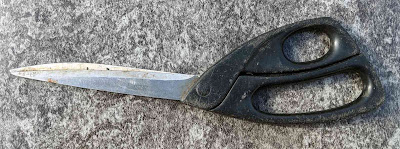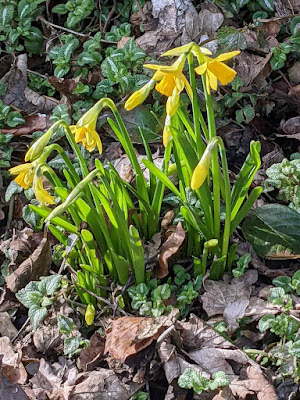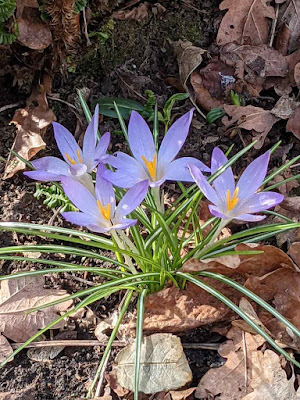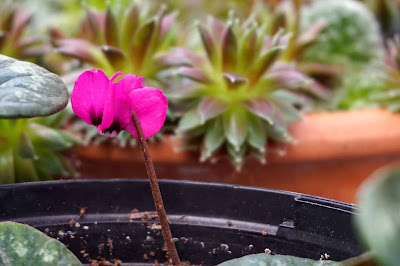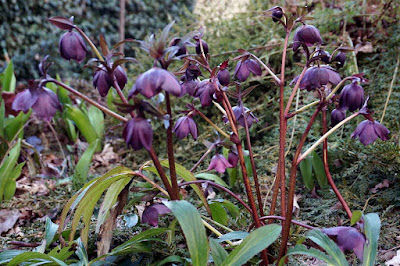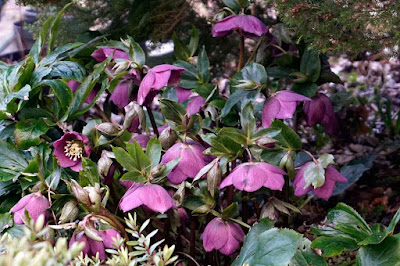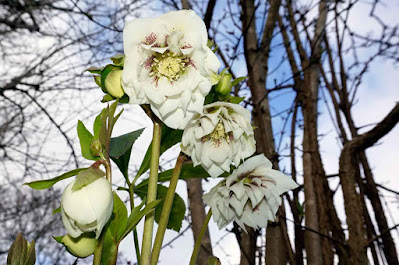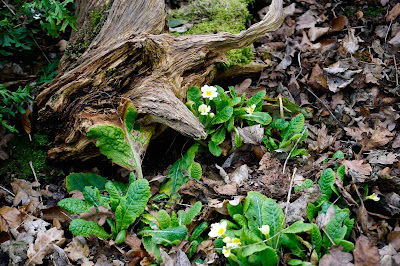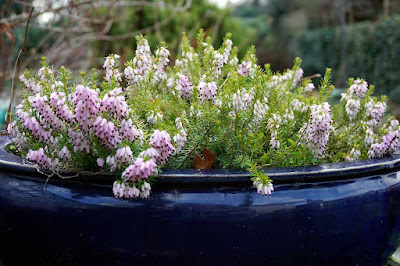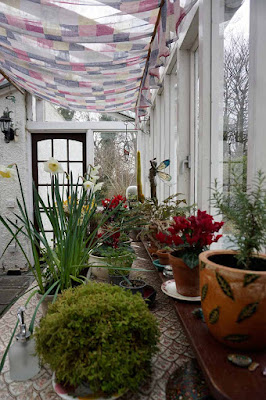My favourite and most used tools in the garden are my Darlac cut’n’hold snappers. I have the 655mm and the 1000mm versions. They are great for reaching over and through plants in the border. I hold onto the left wheel of my chair with my left hand and can reach quite far with my right hand to prune and dead-head. They are made of aluminium and the smaller one is quite light. The cutting head can swivel which means it can be used with the left hand (which is sometimes useful and sometimes annoying) and there is a little catch that you can flick with your thumb that keeps the grips closed without you having to grip them closed. They hold onto the stem so it is easier to bring the cut piece to put in a trug rather than them falling back into the flower bed. The long one really requires both hands as it needs to be stabilised. I can use it single handed but it is very sore, as the hand operating the mechanism has to bear the full weight. It is much easier to use with one hand supporting the long bar to take the strain. It can be useful just to pick things out of the bed or even out of the pond. I use the long one especially to cut the climbing roses at the top of the arches. I have found another use for the smaller one: it is great for getting some weeds out! Because it has such a good grip I (much better that the ordinary household reacher aids for disabled people) I use it for taking out grass seedlings and small weeds like hairy bittercress. It has 2 gripper bars that hold onto the cut stem and a blade that does the cutting. I may actually get a new one and keep that for pruning, and take the blade of the old one and keep that one for weeding. It won’t take out long rooted weeds like dandelions.
 |
| Darlac cut’n’hold snappers |
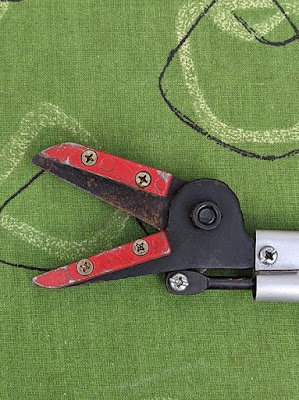 |
| snapper cutting head |
These bypass loppers are ancient and well used. I find them very heavy to use and they really require two handed operation. I can use them if they are pointing up or down, but if I have to use them out to the side I just fall over as I have no core muscles for stability. I can lop some branches that are low down, and I have managed to lop branches by bracing one lever on the wheelchair and pulling the other lever down. Much easier just to ask for help.
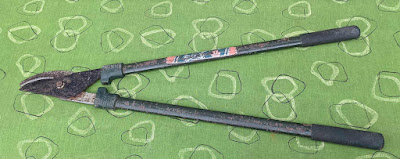 |
| Loppers |
The long reach pruners are not used much any more. I find them too heavy and unwieldy to use properly. You need to pull the rope to cut the branch and you need a bit of strength to do this. It is also difficult to see exactly what you are doing and finding the correct branch to lop. I have used this with the blade facing me, and also with the blade facing away form me, but if you don’t have enough strength to get a good cut then the blade can get stuck. Harry has sometimes come home and found this dangling stuck in a tree if I have not been able to free it myself.
 |
| Long reach pruners |
This Wilkinson tree saw can be a useful tool, not only when the branches are quite thick but also when the branches may be in a difficult position. Loppers can sometimes just be too big to get into some areas. The teeth cut on the backward stroke and you get a good clean cut through the wood. I like the safety features on this one as it can lock in the closed position as well as the open position. The cutting action is not the same as normal saws so it can take a bit of getting used to.
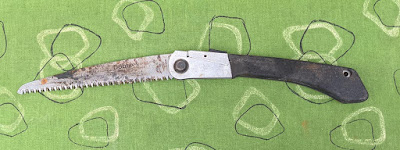 |
| Wilkinson Sword tree saw |
I don”t really use shears and as I would have to use them at my side rather that straight on as I would just fall over. I do have some single handed shears but actually just end up using scissors instead. These days I just use my Darlac snappers and tree saw, and ask for Harry’s help with anything they can’t cope with or that I can’t reach.
